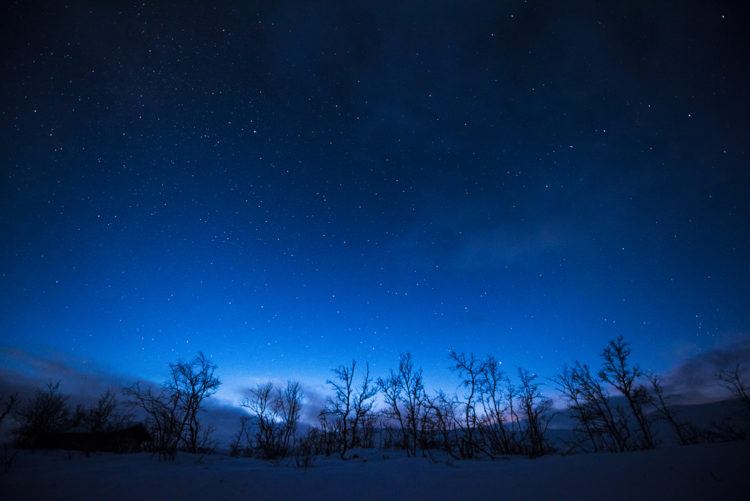Good Tuesday, one and all! This week for #HybridDaveTuesdays, on #TravelTuesday here at ScottKelby.com, I’ll share a little bolt on to a previous post about shooting in the cold from a couple of weeks ago. It’s something particularly useful if you’re planning a shoot in the high Arctic areas of Norway, Finland, Sweden, Russia, Alaska, Canada, Greenland, or Iceland, so if any of these places are on your list during the winter, make sure to pay attention and tell all your friends!
There is a lot said about golden hour and blue hour in our world. You’ll struggle, in fact, to get through a photography tutorial without hearing one of those phrases. The reason for this post is to share with you my experiences in losing the ‘hour’ from these terms during the Arctic winters I’ve experienced and arming those of you who are planning to visit the far north (or south) with the knowledge you’ll need for planning your time.
The Arctic winter is a funny thing. Right now, everything from 66 degrees north and up has no sunrise – they said goodbye to the sun a short time ago and look forward to seeing it again sometime in January.

The absence of a sunriseliterally changes everything we know of blue hour and golden hour, and that means, we have to change the way we think. Daylight hours are much shorter, affording us drastically less time to get any bright daylight shots. Everything is darker, but that’s just the start of it!
What happens to the sun during an arctic summer is pretty strange – it just bobs up and down in the sky, never setting for weeks. Arctic winters are the polar opposite – the sun bobs up and down BELOW the horizon, never really rising, but still providing some light depending on how far into the cycle you are. At the beginning and end of winter, the sun pokes above the horizon, and as you get toward the middle of winter, it gets further and further below the horizon.
What this makes us notice is that twilight sort of period – the bit right between golden hour and blue hour – hangs around for longer. A lot longer, in fact. The whole day, at times, can be akin to a sunrise or sunset, casting an ambient glow across the landscape for hours with virtually no direct light.

It really is important as a photographer to be aware of the sunrise and sunset times when visiting the Arctic, particularly the high Arctic, and plan properly around it – especially when you consider that you could potentially lose light earlier during snowstorms!
The bonus, on top of having this tranquil sunset-esque light all day, is having awesome colours and tones alongside noticeably less harsh shadows. Of course, I couldn’t give you a bonus without bringing you back down with a thud, so I’ll also tell you about it being a lot darker. Our eyes, the wonderful things that they are, adjust appropriately to the lack of light, but trust me – when you start sorting your camera settings, you’ll notice from the ISO and shutter speeds that you’ll have to select that it’s a lot darker than you think!
When the sky looks blue, but you can see all the stars, is just when you realise this, and it’s great that blue hour hangs on in there for longer!

My advice to consider, if you’re travelling to the higher or lower latitudes on a photography mission, is to pay very close attention to sunrise and sunset times and plan your days carefully around them. Make back up plans, scout locations, and take advantage of anything that presents itself to you…here’s why:-
I’d visited Strokkur before and captured a sequence of shots showing its aquatic eruption. I’d made the shot some time ago, so I wanted to get back and improve on it. Here’s the shot I’m talking about:-

Problem is that when I got there, I was fighting through a blizzard, unable to feel my nose, and was struggling to get a clean shot. Here’s me with my buddy John Parry to give you a feel:-

The situation had ruined my plan, but making the most of the change in conditions and lessening daylight hours, I caught a scene which has become one of my favourite shots ever:-

The extreme north can be so beautiful, but simultaneously so harsh and unexpected. Be forearmed and expect the unexpected – you can really maximise on it and capture its awesomeness!
Much love
Dave





Thanks for the great information! I’m headed to Iceland and the end of January so this is timely for me.